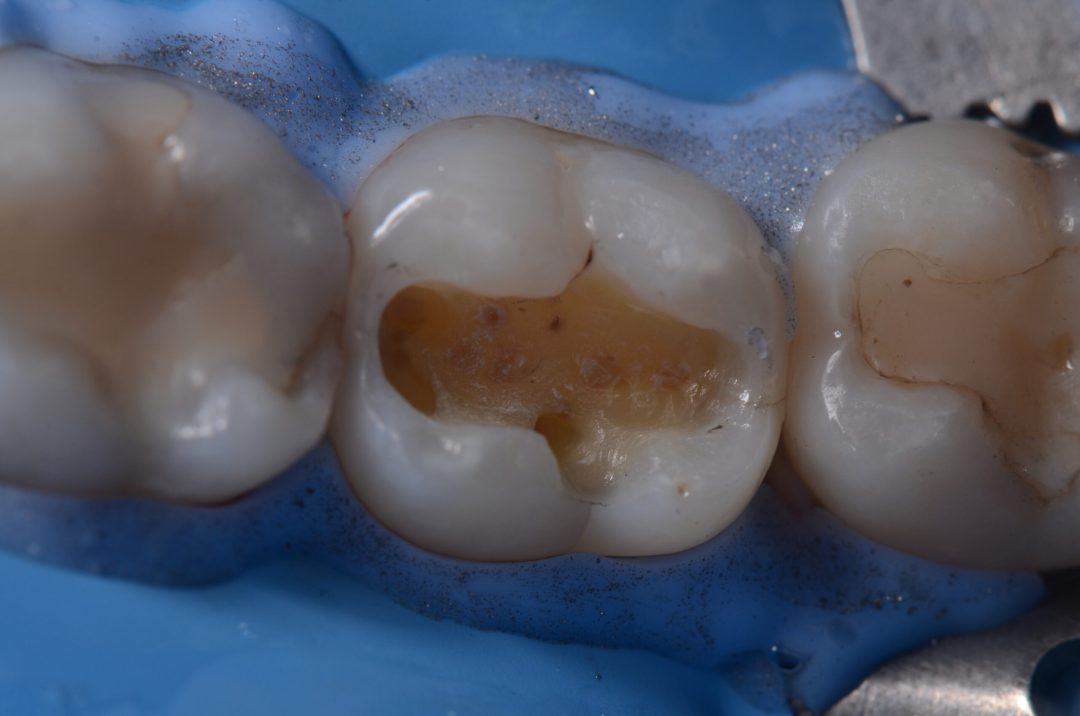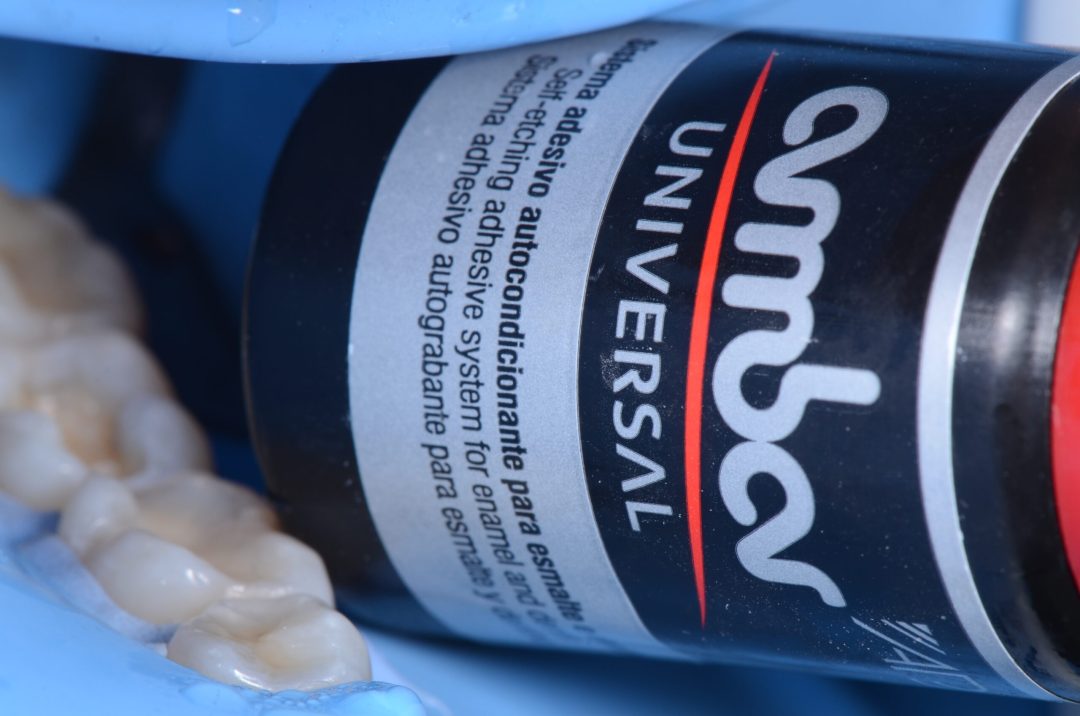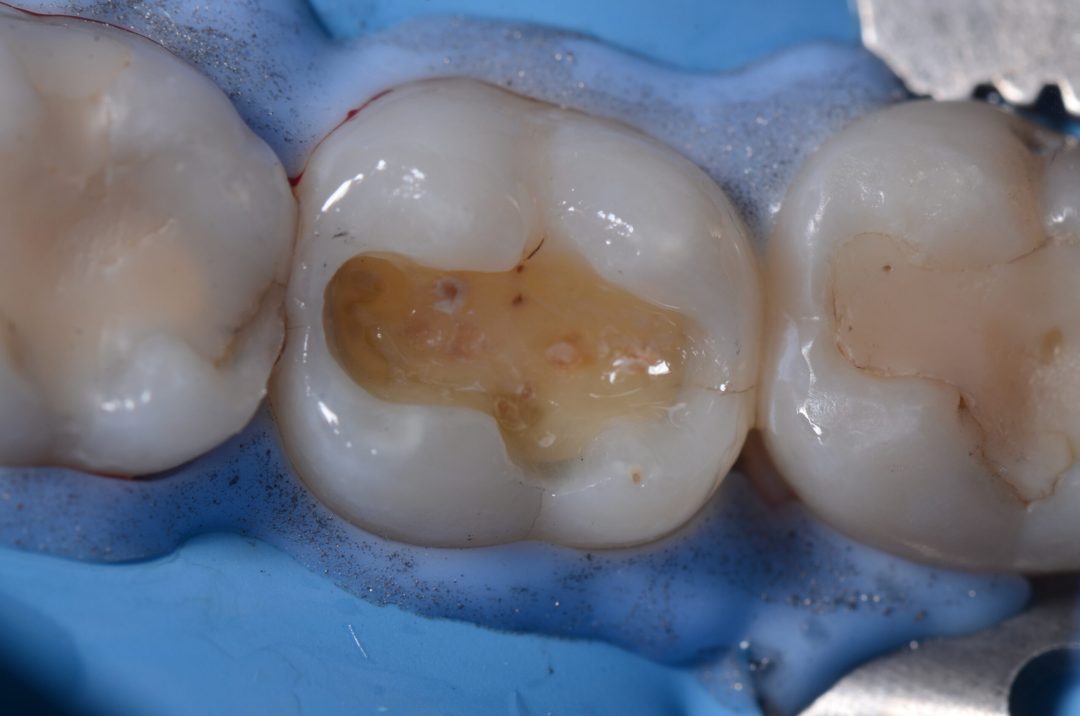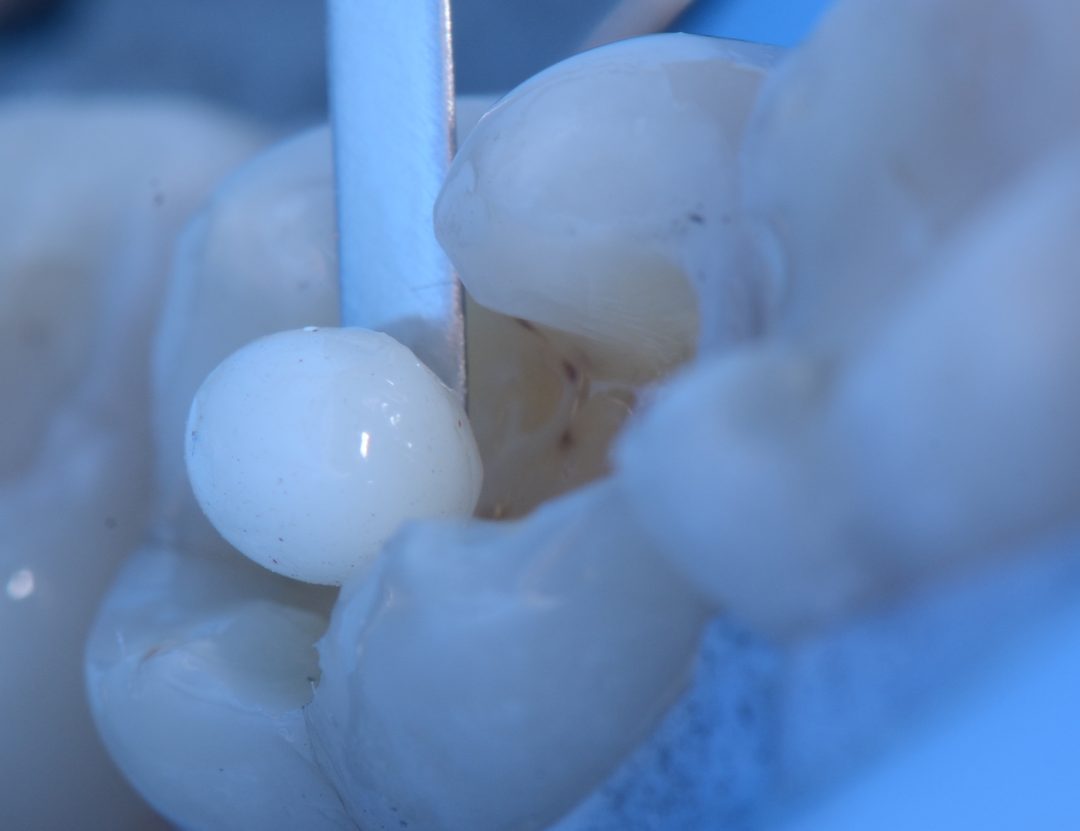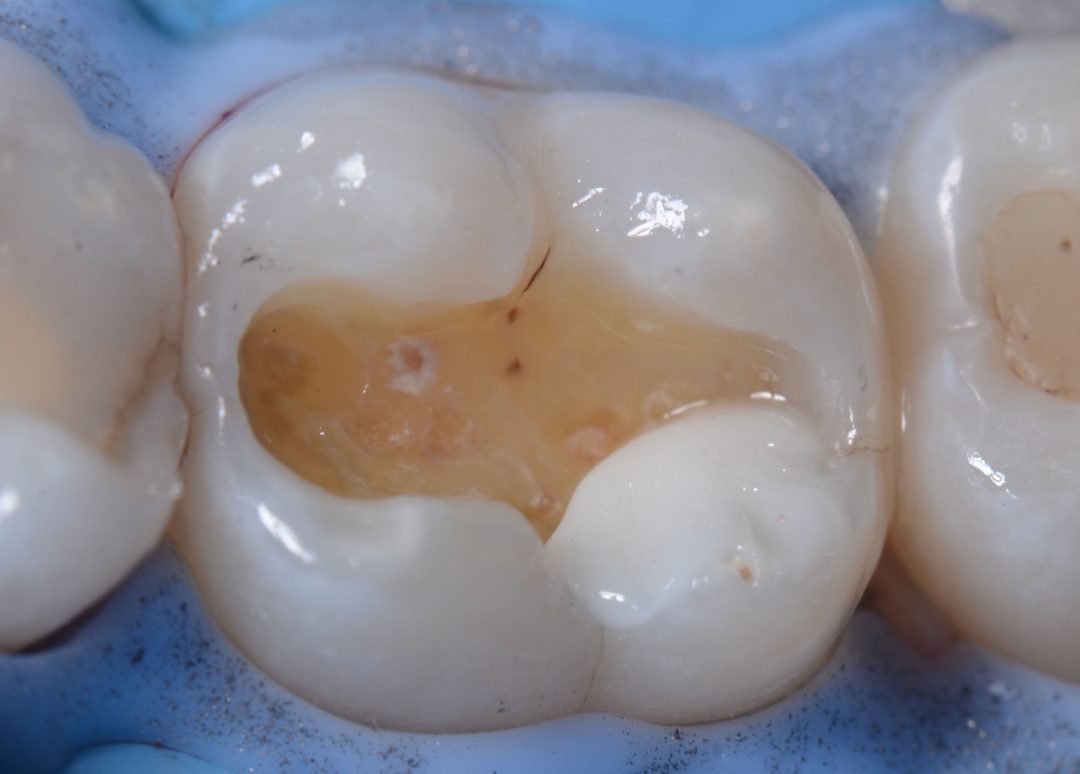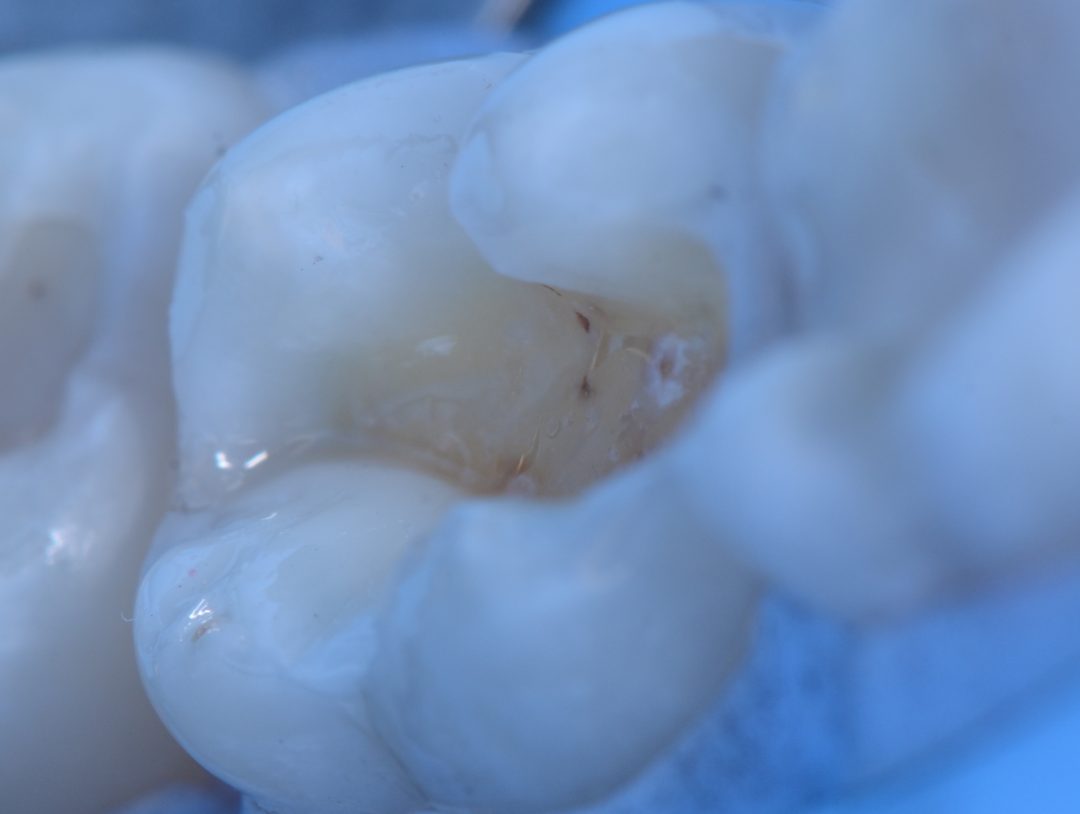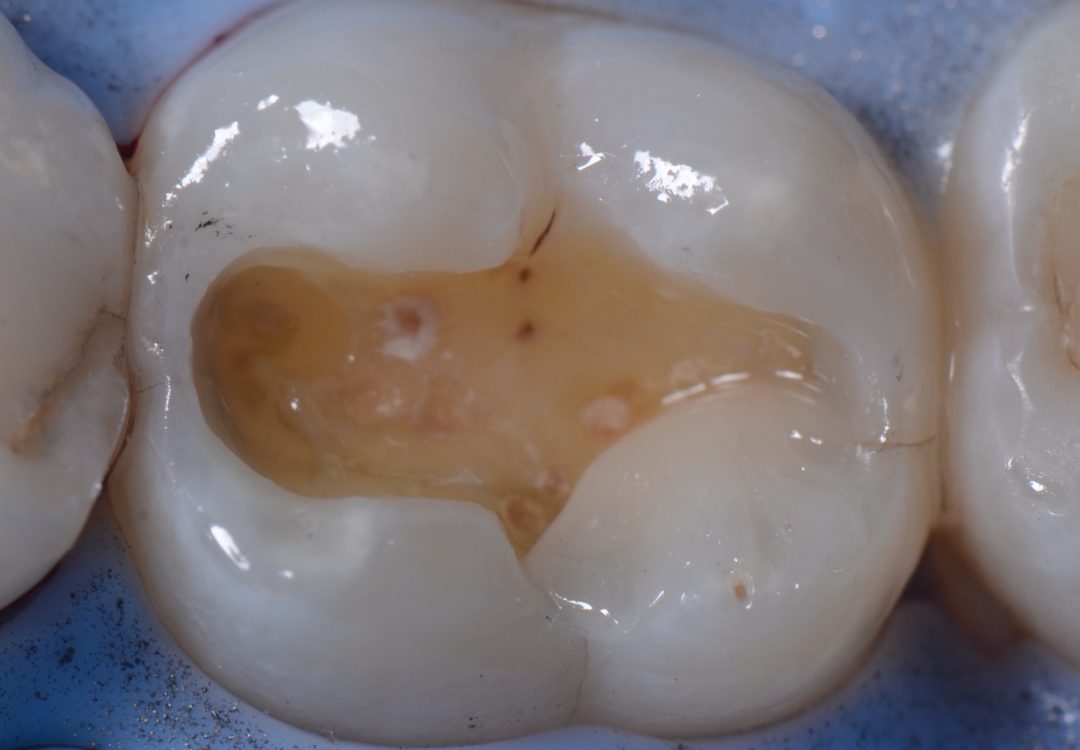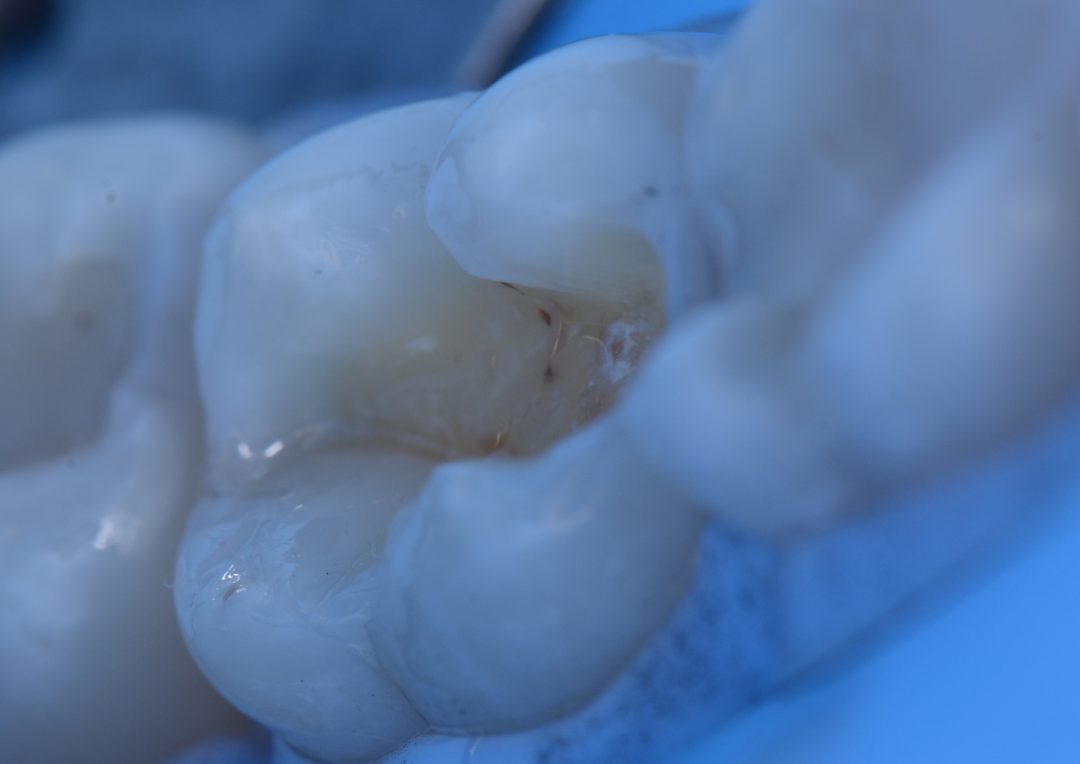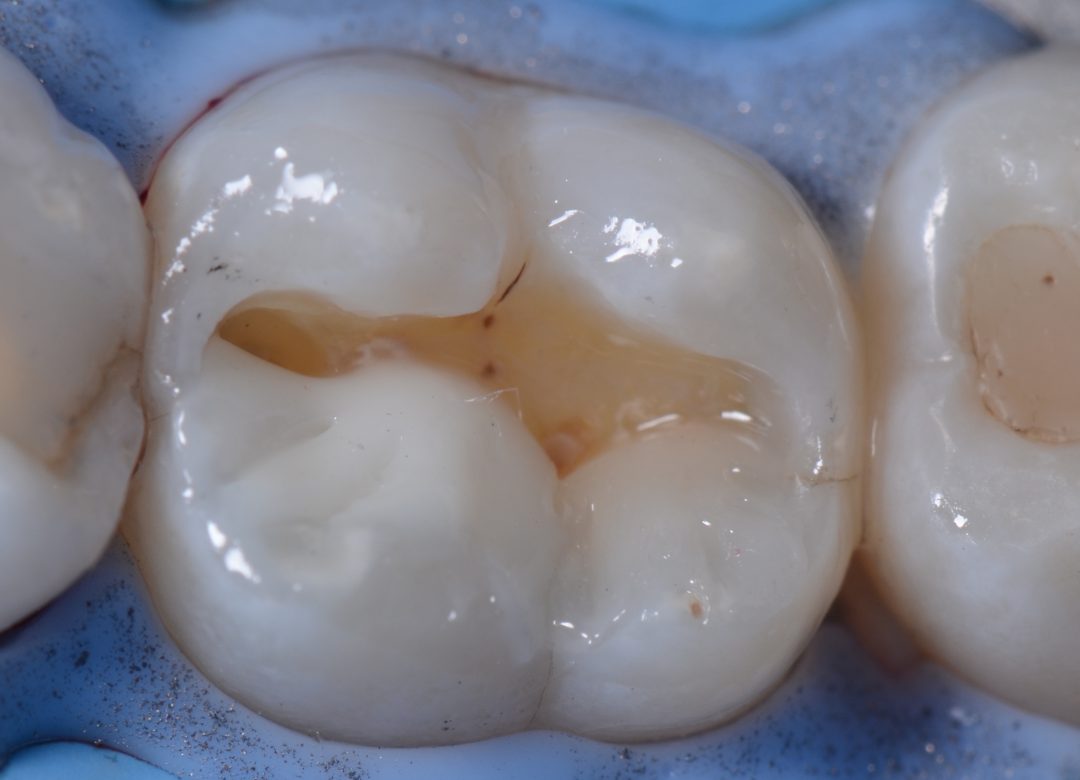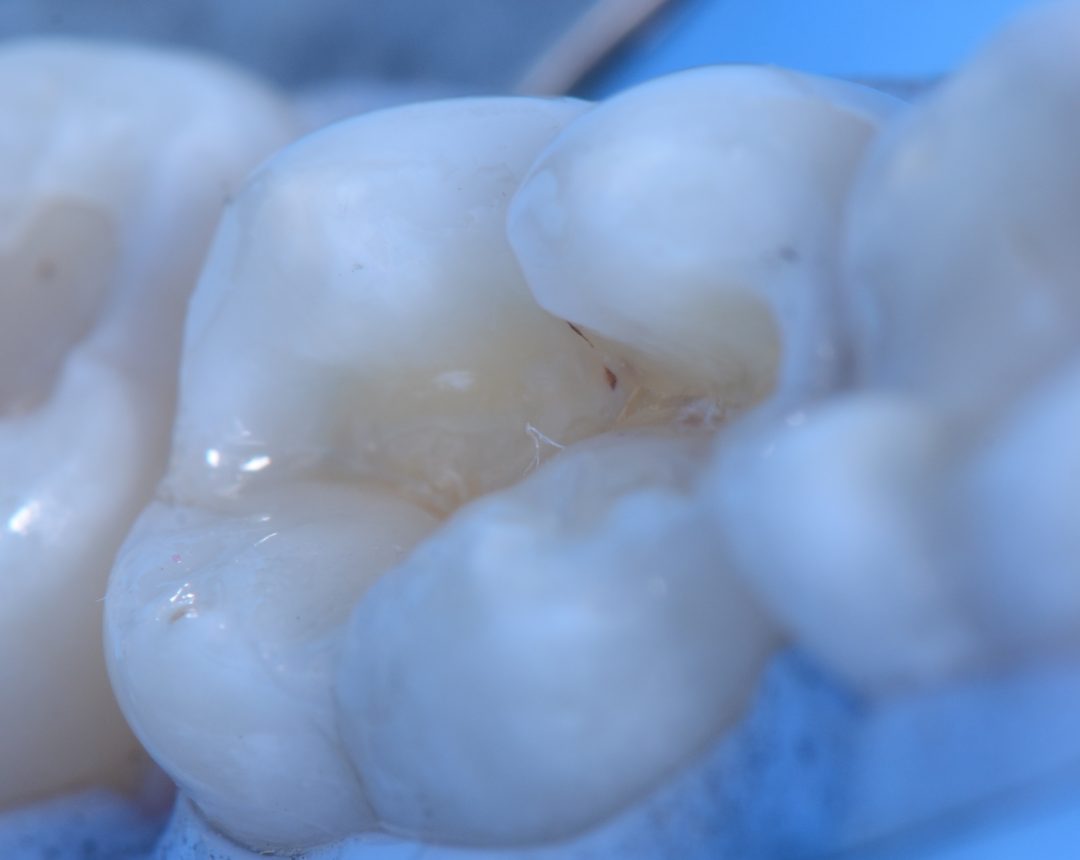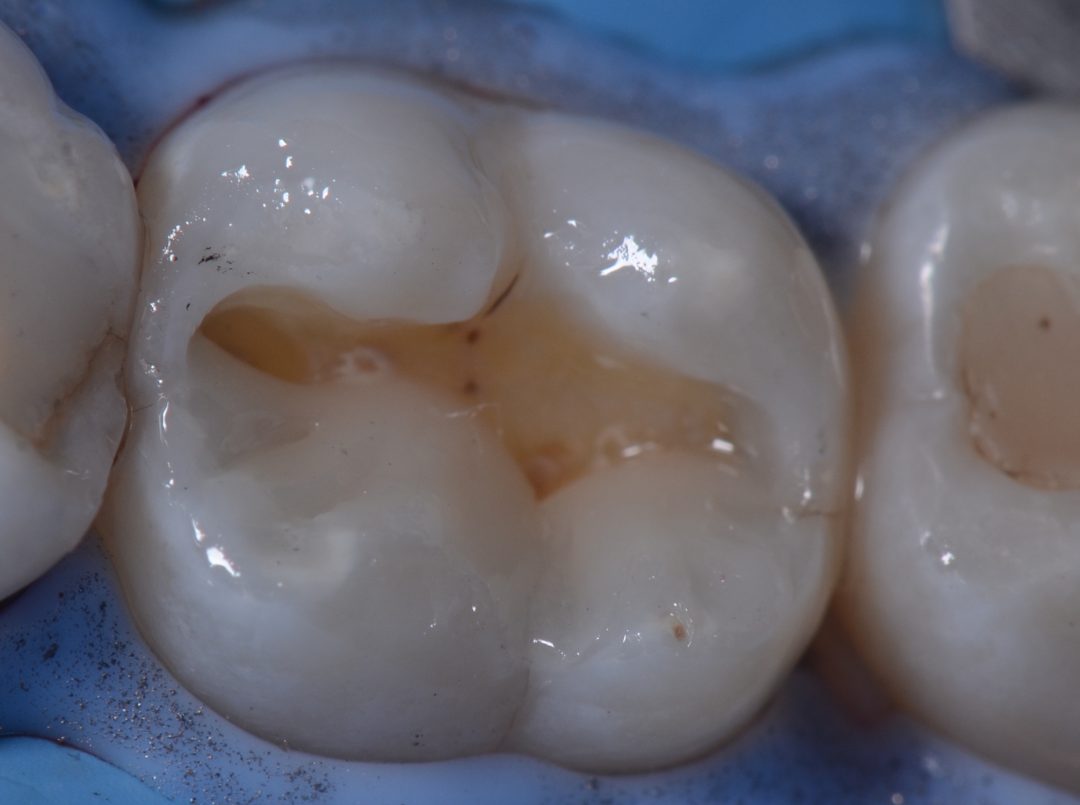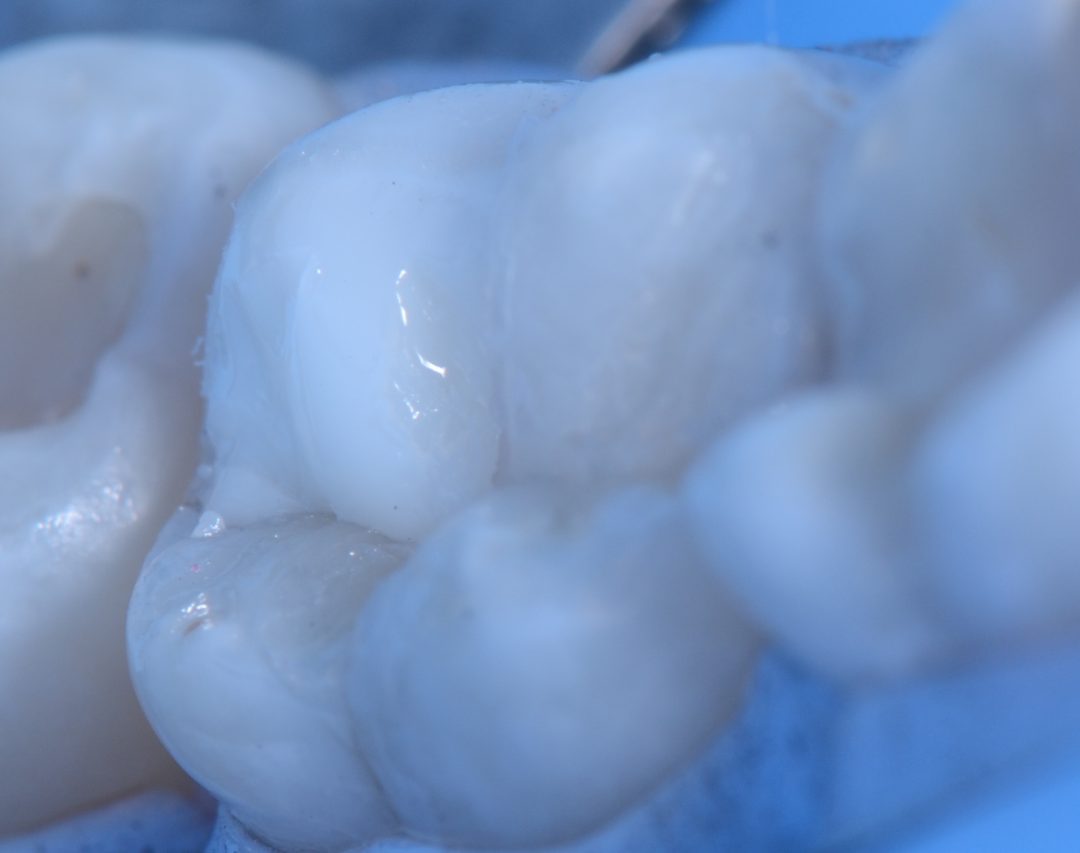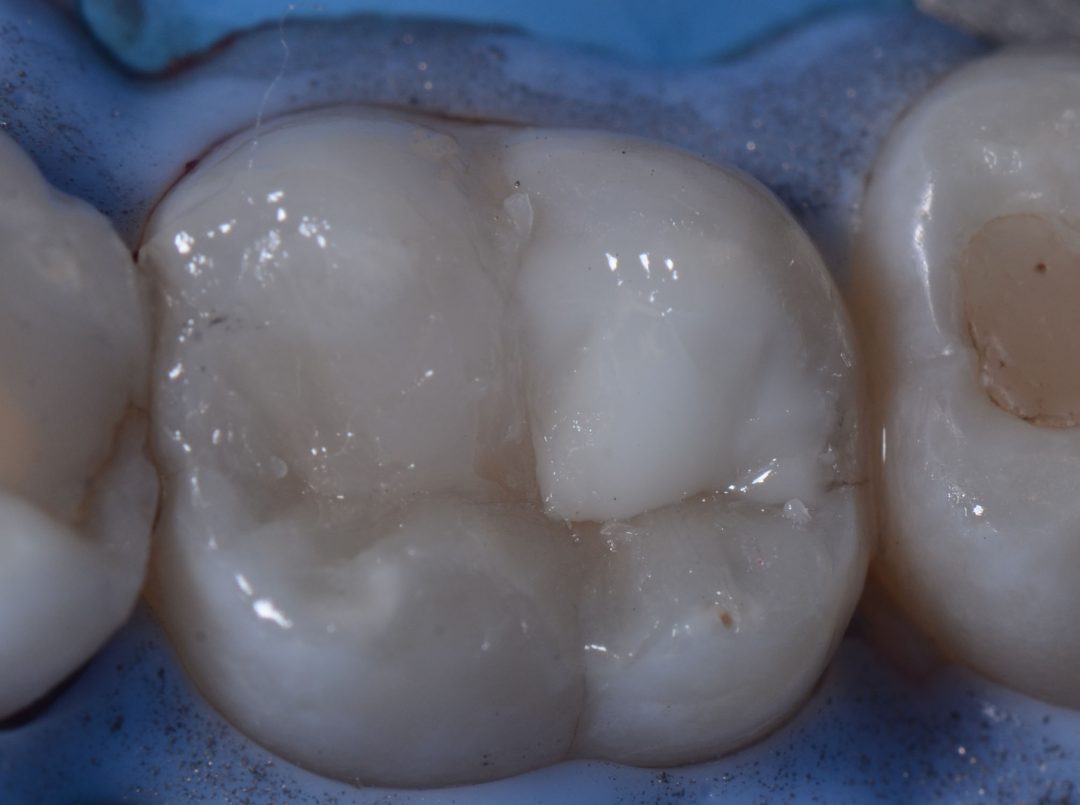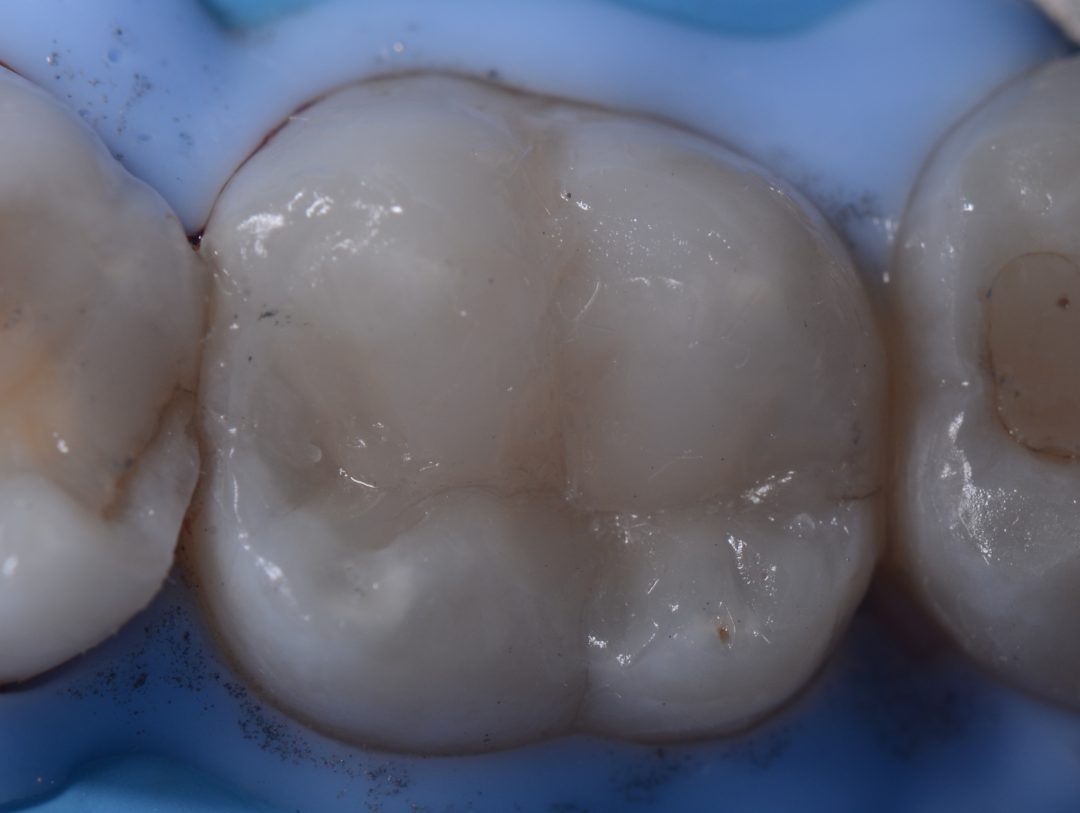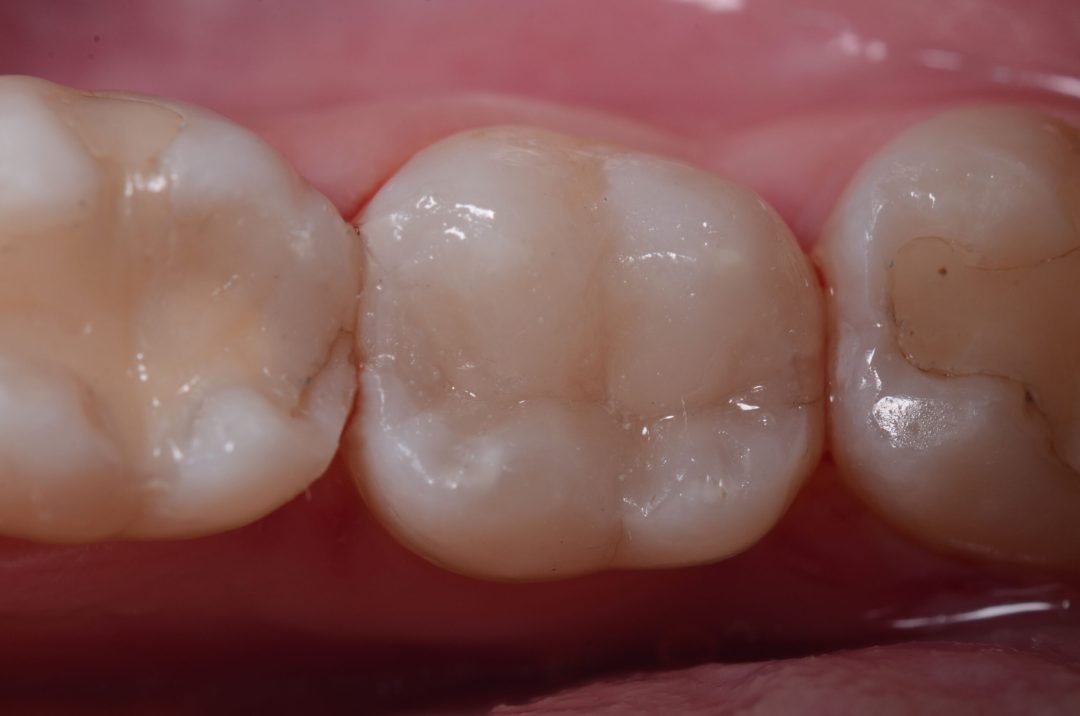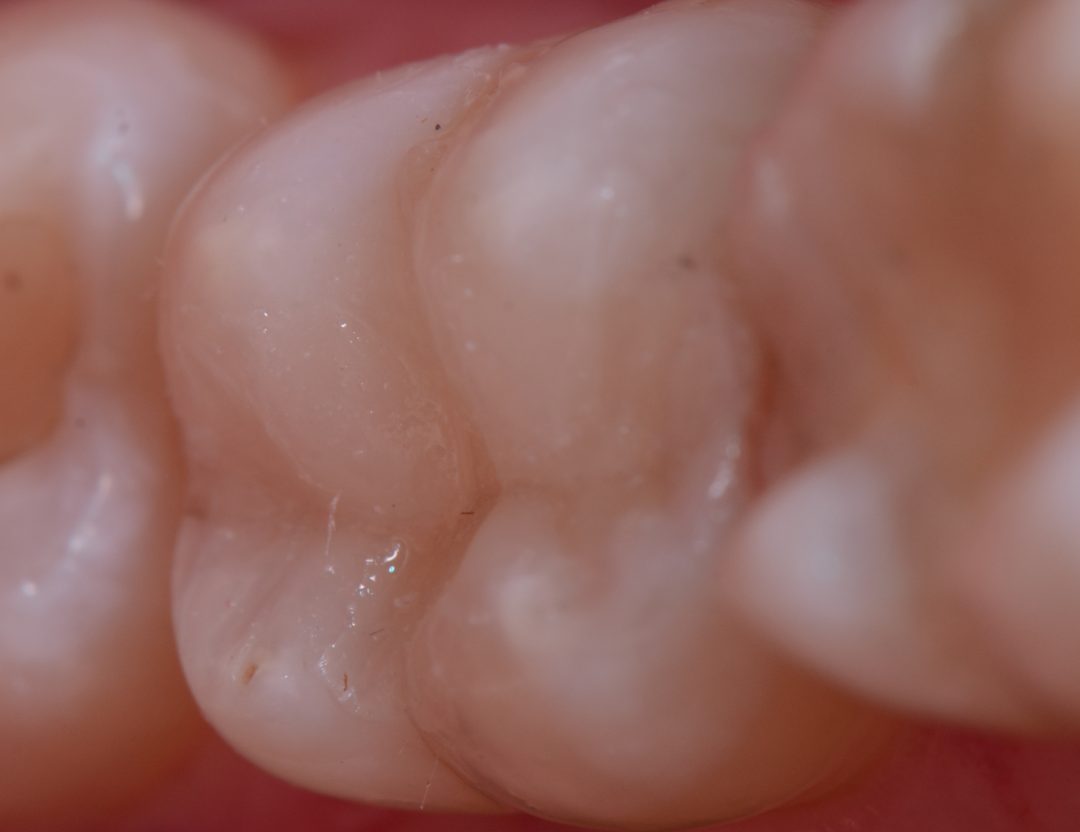Author: Dr. Fábio Sene
35-year-old female patient.
CHIEF COMPLAINT:
Dissatisfaction with the class I amalgam restoration in tooth 37.
INITIAL EVALUATION
After the detailed anamnesis, clinical and radiographic exam, no pathologic alteration was found. During the clinical exam, the presence of an old restoration on tooth 37 made in amalgam was observed
TREATMENT
After anesthesia, absolute isolation and prophylaxis with pumice stone and water, the amalgam restoration on tooth 37 was removed. The cavosurface angle was carefully finished and etched with 37% phosphoric acid Condac 37 for 30 seconds, washed abundantly and the whole tooth, enamel and dentin, was dried with air.
Next, a first layer of Ambar Universal APS adhesive was applied actively with Cavibrush. Being it a universal adhesive system, it was applied using the self-etching technique since there is no removal of smear or mineral layer and, consequently, there is no exposition of collagen fibers. Therefore, following the self-etching technique, the dentine may and should be dried with air. Fifteen seconds after the first application, air spray was applied to evaporate the solvent and a second layer was applied in the same way and photoactivated.
Following that, the universal chroma composite Vittra APS Unique was applied in layers (since it is not a bulk-fill type composite) rebuilding the anatomy. This composite is very interesting because, in the beginning, before polymerization, the composite looks opaque and whitish. However, after photoactivation, the composite takes the color of the side walls of the tooth, integrating itself chromatically with the dental structure in a perfect way, allowing for the mimicking and a fantastic esthetic result, in a simple way, with just one composite. This new universal chroma composite came to revolutionize and, above all, simplify and facilitate, with extreme esthetic quality, restorative technique and procedures.
STEP-BY-STEP

